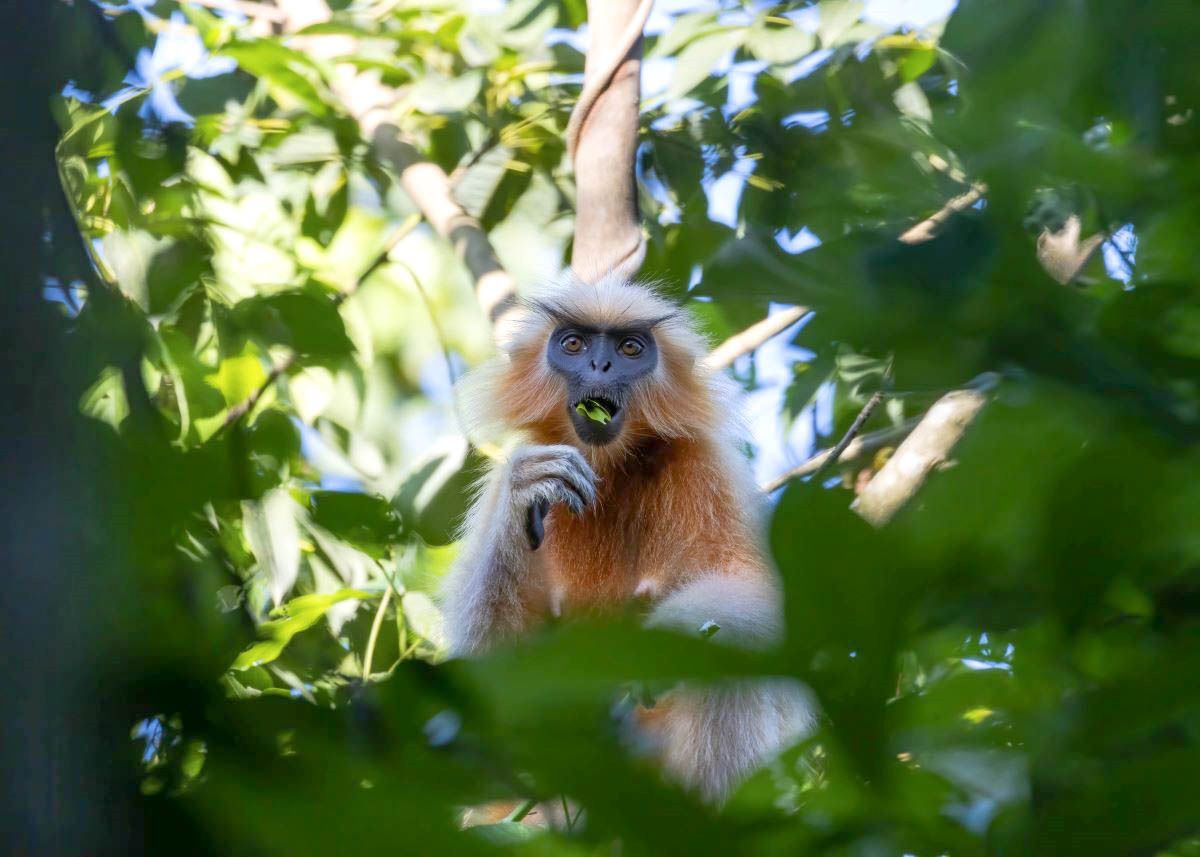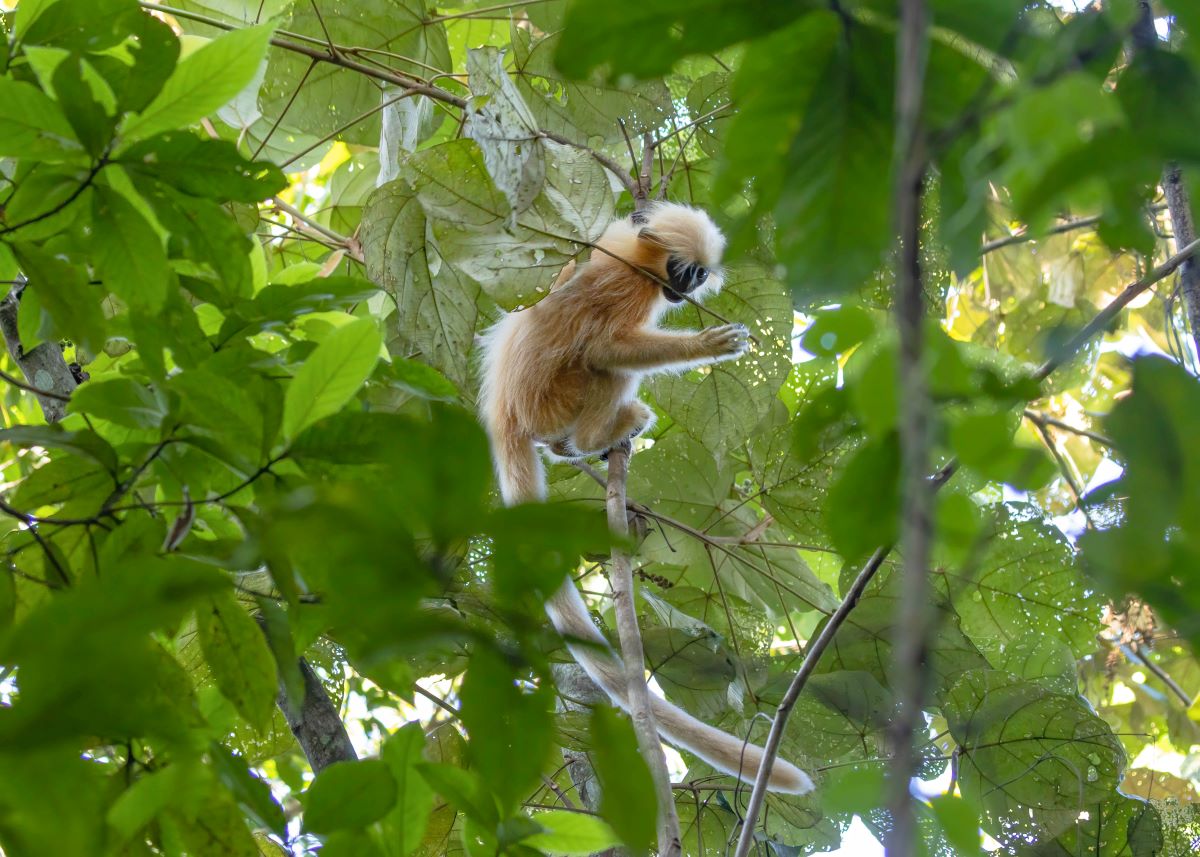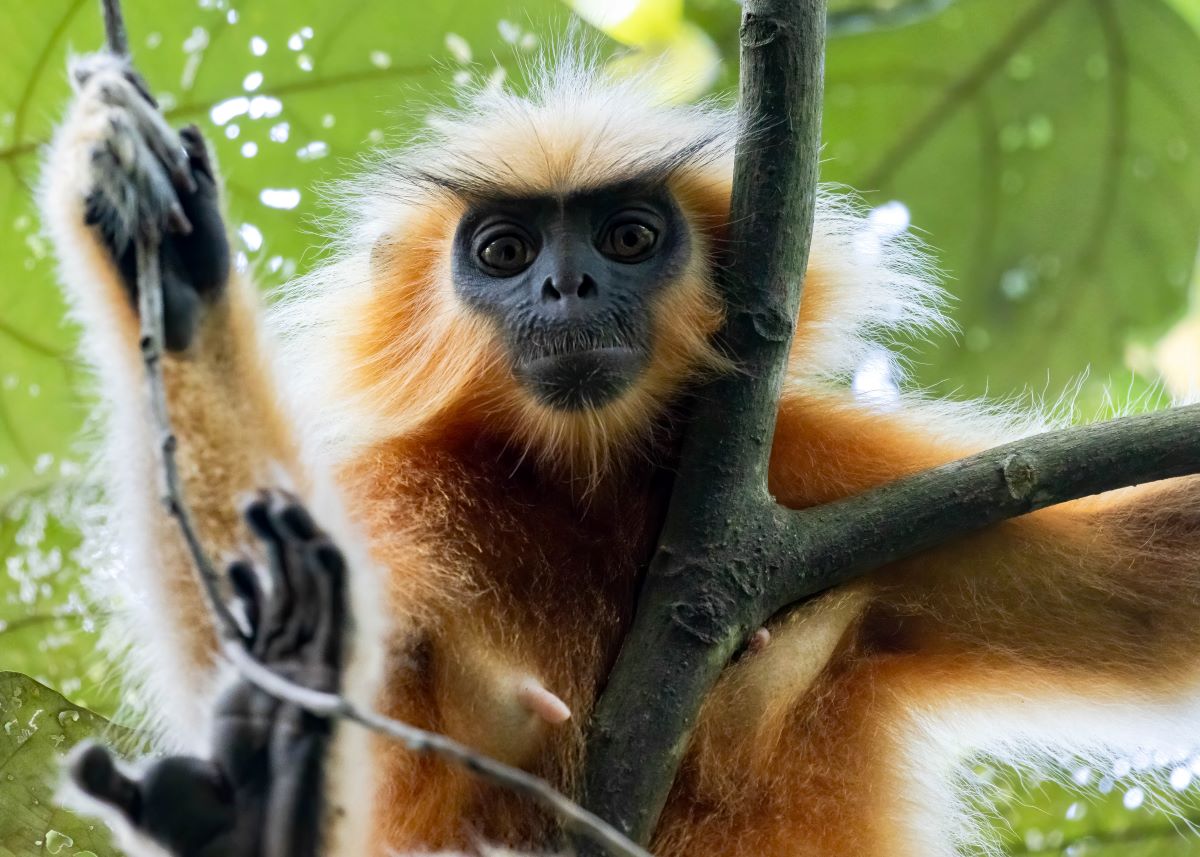Golden Langur or Gee’s Golden langur was first introduced to the western world by naturalist and tea planter Edward Pitchard Gee in 1950. Therefore, this primate species is also known as Gee’s Golden langur. This Old World monkey is endemic to India and Bhutan and found in a small part of western Assam, India and the foothills of Black Mountains of Bhutan.
Golden Langur

Appearance
As the name suggests itself, the coat color of the male Golden langur is cream to golden colored, while the females and juveniles are paler in color which is silvery white to light buff. The face color of both the sexes is black. The tail of Golden langur is significantly long and the weight of an adult is between 9 – 12 kgs.

Behavior and diet
Golden langur is a social animal living in group of 8 individuals in average. However, they are seen in smaller and much larger groups as well. Normally a group is led by an adult male and consists of females, juveniles and infants. Golden langur is arboreal and normally forages early in the morning and in the afternoon. It takes rest at noon while the temperature is at its peak. It spends most of the times on the canopies and hardly comes down to the ground. Its longer tail serves as a balancer for leaping across the branches of high trees in the forest. Golden langur is herbivorous animal and feeds on ripe or unripe fruits, leaves, seeds, buds and flowers.
Distribution
Golden langur is distributed in an area of 30,000 sq. km (12,000 sq. miles) covering India and Bhutan. This area is bounded by the foothills of Black Mountain, Bhutan by north, the Manas river (India) by east, the Sonkosh river (India) by west and the Brahmaputra river (India) by south. Golden langur is found in a small part of western Assam and the foothills of Black Mountains of Bhutan. Kakoijana Reserve Forest, in the district of Bongaigaon, Assam, India is one of the major habitats of Golden langur in India. A small population is also found in the Chakrasheela Wildlife Sanctuary in the district of Goalpara, Assam, India. Tropical moist forests are the ideal habitat of Golden langur.
Population
As per the International Union for Conservation of Nature (IUCN) the present estimated population of Golden langur is 5,500 individuals. Out of this, 1500 are in India and the rest 4000 are in Bhutan. However, due to rapid habitat loss, their population is steeply declining. Human encroachment, deforestation, illegal timber collection etc. are some of the major reasons of population declination of Golden langur.

Conservation
As per the IUCN, the Golden langur is an Endangered species with a decreasing population trend. Golden langur is among the 25 most endangered primate species in the entire world. Efforts are being made for conservation of this beautiful primate species. In India, legislature has already enacted the Wildlife Protection Act, 1972 for conservation of wildlife. Golden langur is a Schedule I species under the said Act. The species listed under Schedule I are having the highest degree of protection as per the said Act. As per the Forest and Nature Conservation Act of Bhutan, 1995, the Golden langur is a protected animal.
Both the Indian and Bhutanese Governments are taking measures for protection of this Endangered primate. But mass awareness is the call of the hour to save this beautiful mammal from extinction. A recent study reveals that only 13% of the present habitat would be remain suitable for Golden langur by 2031. Therefore, it is the peak time to take necessary steps by all the stakeholders to save this primate from extinction.
Read about more primate species HERE.